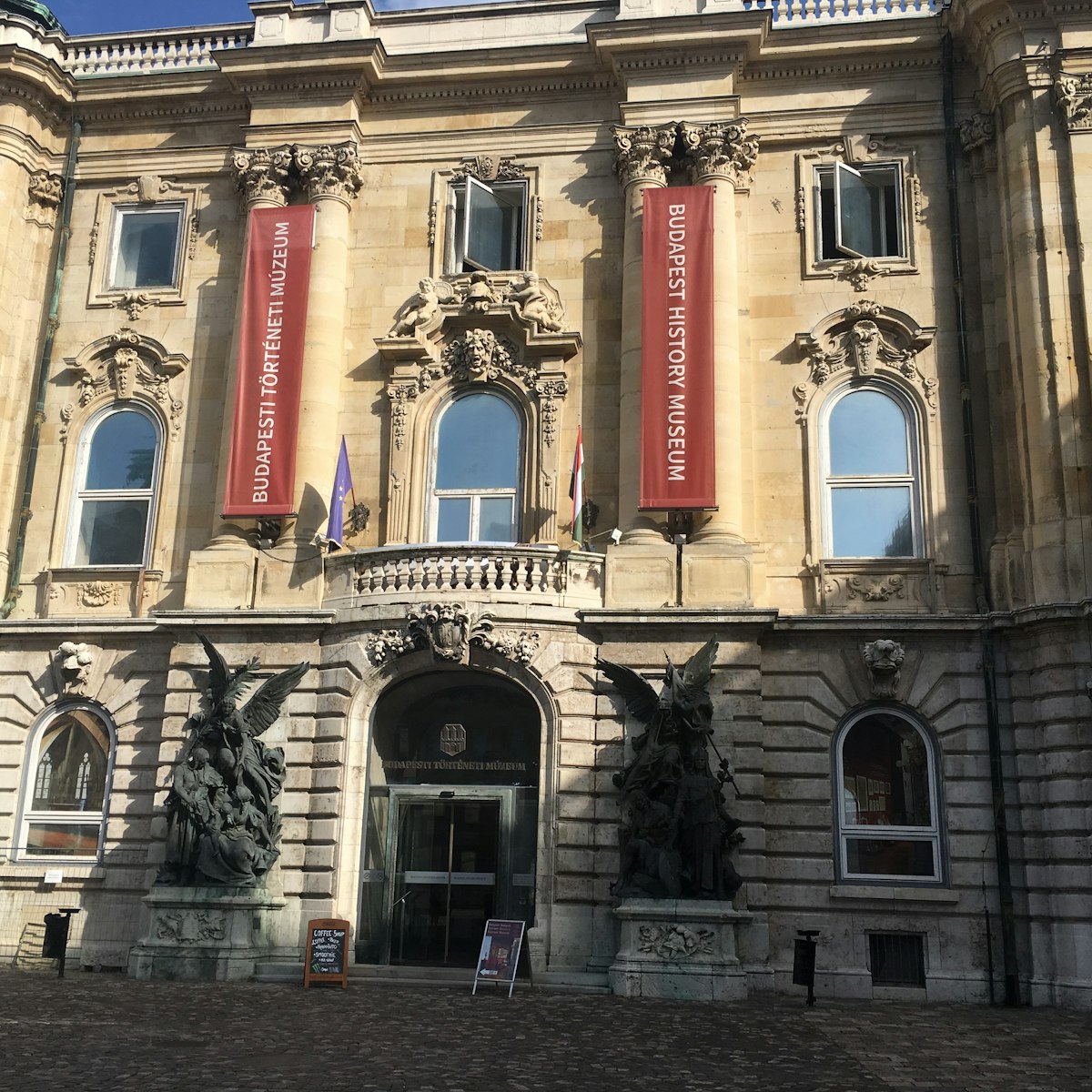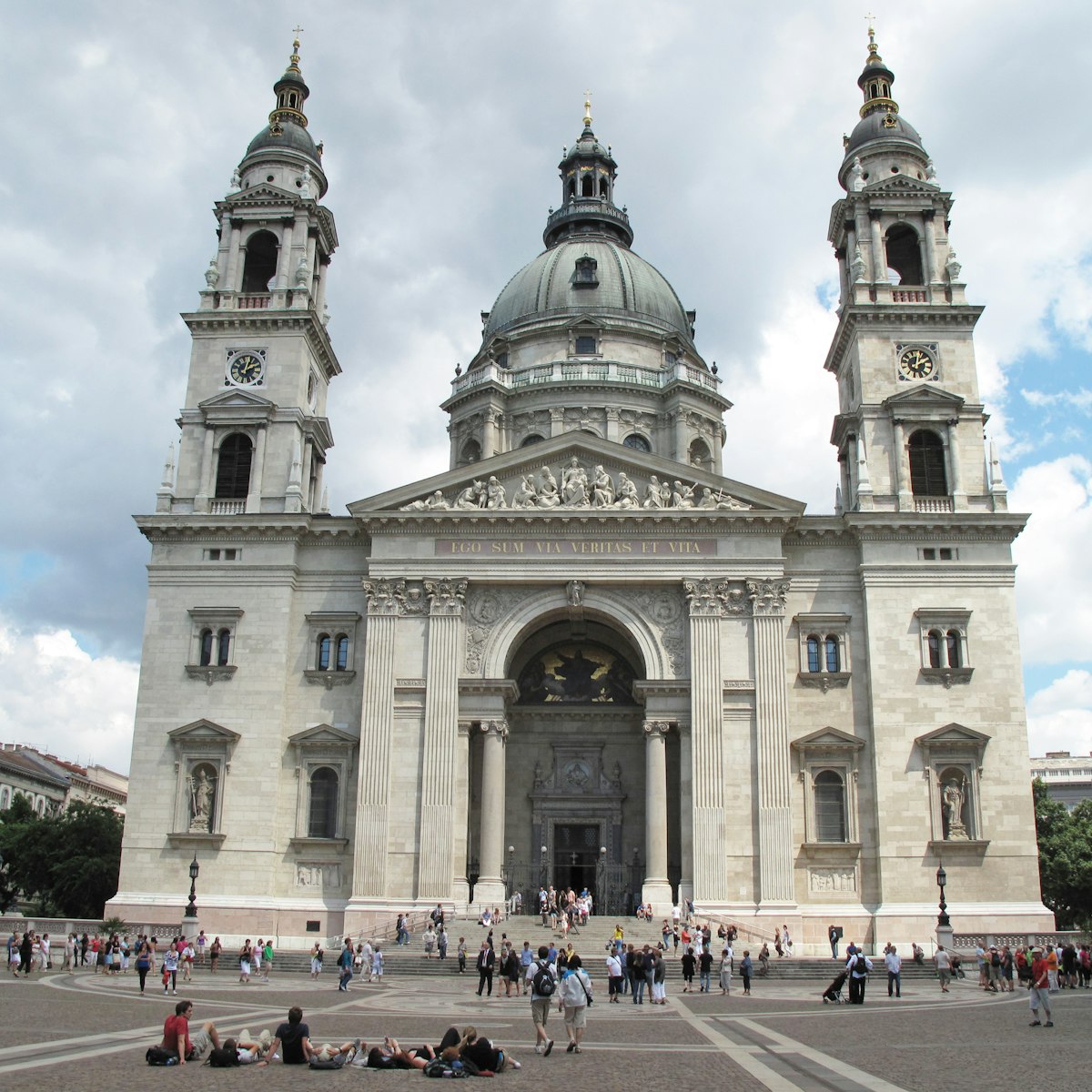On the southern end of V Széchenyi István tér is a statue of Ferenc Deák, the Hungarian minister largely responsible for the Compromise of 1867, which brought about the Dual Monarchy of Austria and Hungary. The statue on the western side is of an Austrian and a Hungarian child holding hands in peaceful bliss. The Magyar kid's hair is tousled and he is naked; the Osztrák is demurely covered by a bit of the patrician's robe and his hair is neatly coiffed.
Lonely Planet's must-see attractions

0.74 MILES
Castle Hill is a kilometre-long limestone plateau towering 170m above the Danube. It contains some of Budapest’s most important medieval monuments and…

1.8 MILES
Housed in a grand Renaissance-style building and once again opened after three years' renovations in late 2018, the Museum of Fine Arts is home to the…

25.3 MILES
The largest church in Hungary sits on Castle Hill, and its 72m-high central dome can be seen for many kilometres around. The building of the present…

0.42 MILES
The Castle Museum, part of the multibranched Budapest History Museum, explores the city's 2000-year history over four floors. Restored palace rooms dating…

20.58 MILES
The 13th-century citadel looms over Visegrád atop a 333m-high hill and is surrounded by moats hewn from solid rock. The real highlight is simply walking…

0.65 MILES
Budapest's stunning Great Synagogue is the world's largest Jewish house of worship outside New York City. Built in 1859, the synagogue has both Romantic…

5.51 MILES
Home to more than 40 statues, busts and plaques of Lenin, Marx, Béla Kun and others whose likenesses have ended up on trash heaps elsewhere, Memento Park,…

0.32 MILES
Budapest’s neoclassical cathedral is the most sacred Catholic church in all of Hungary and contains its most revered relic: the mummified right hand of…
Nearby Budapest attractions
0.05 MILES
This sumptuous art nouveau building facing the Danube across V Széchenyi István tér, with its gold tiles, mosaics and celebrated wrought-iron Peacock…
0.12 MILES
Arguably the most striking of all the bridges in Budapest, twin-towered Széchenyi Chain Bridge, which is named in honour of its initiator, István…
0.22 MILES
At the northern end of Váci utca lies Vörösmarty tér, a large square surrounded by smart shops, galleries and cafes. In the centre is a statue of Mihály…
4. Urban Betyár Ethnographical Visitors Centre
0.22 MILES
Although just a marketing tool to get people to eat at the Urban Betyár Restaurant, this little museum does an excellent job portraying Hungarian rural…
0.23 MILES
This Romantic-style concert hall, built in 1865 but badly damaged during WWII, faces the river to the west of Vörösmarty tér. Reopened in 2014 after a…
0.26 MILES
The sumptuous Bank Palace, built in 1915 and once the home of the Budapest Stock Exchange, has been been converted into a high-end shopping gallery called…
0.26 MILES
A controversial statue of Hungary's intra-war leader, Miklós Horthy, considered a hero by the right wing but reviled as a fascist dictator by many others,…
0.29 MILES
An easy way to cool down on a warm afternoon (and enjoy views of Castle Hill and the Royal Palace) is to stroll along the Duna korzó, the riverside…







